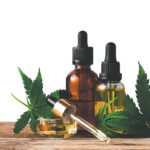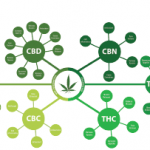I have been tongue-tied, of late.
When I was a medical student, I was told not to turn the physical examination into an aerobic workout. This sage piece of advice was imparted by my physical examination preceptor, who had watched me perform a complete examination on a hapless volunteer.
At the time, I thought of the physical examination as a checklist. I moved through the prescribed maneuvers in order, dutifully crossing each off my mental list upon completion.
After watching me have the patient pirouette his way through my ministrations, my preceptor tactfully suggested I consider economy of movement as an important goal. Instead of making the examination convenient for me, I should make the examination convenient for the patient. So, for example, when I had the patient lay down, I should complete all of the maneuvers that required a recumbent position, not just the maneuvers that were next on my list.
To this day, my examination is largely based on the technique I developed decades ago: I start with the patient facing me, which gives the patient an opportunity to become accustomed to me and to my touch. I then have the patient lie down, so I can examine the abdomen and extremities. Afterward, I help the patient sit up and ask if there is anything else I should examine, before I exit to allow the patient to re-robe.
When I became a rheumatology fellow, I added a patter to my examination. Carol M. Ziminski, MD, associate professor of medicine at Johns Hopkins University, is fond of saying, “The hardest thing to do on command is relax.” So while I examine patients, I chat about the weather, about traffic, about anything, really, that might distract patients from the odd intimacy of the moment.
I have performed this song and dance so often I could complete it on autopilot. I engage in mindless banter as my hands move through the examination, virtually on their own, until I feel something beneath my fingertips that requires my full attention.
Not anymore.
Back in Business
After a year of conducting clinic visits though FaceTime, my first few clinic visits were shaky. My usual patter was on pause, because I was too busy lurching through the examination, trying to remember what came next.
I was thinking about this as I was working my way through the examination of a patient with isolated mononeuritis multiplex. I knew the diagnosis was correct because the patient had already been seen by two neurologists, including a colleague at my institution who had made the referral largely to avoid having to manage the patient’s immunosuppression.
As I was examining the patient, I explained that isolated mononeuritis multiplex often responds readily to prednisone alone. I was not worried about systemic polyarteritis nodosa because his acute phase reactants had never been elevated, which would be unusual for that diagnosis. He told me his feet were always cold; I told him this was a common complaint among patients with neuropathy. The deadened nerves created the illusion of coolness.
But then I crouched to feel his feet. They were cold. Icy, even. And I couldn’t feel his pulses. I kept digging around until it became unseemly, but I just couldn’t find his dorsalis pedis pulse.
I stood to re-examine his upper extremities, and I realized I couldn’t feel his radial pulse, either. It then occurred to me to ask, “Do you smoke weed?”
He nodded.
He had previously denied using illicit drugs, primarily because he didn’t see why it was important and he didn’t want to be judged, but he had smoked cannabis and tobacco since he was 12 years old.
I asked him to take all the information I had given him about isolated mononeuritis multiplex and put it aside. I then started telling him about cannabis arteritis, an accelerated form of thromboangiitis obliterans (formerly Buerger’s disease) that occurs most commonly in patients who smoke both cannabis and tobacco. Although it has not been reported to cause mononeuritis multiplex, given his absent pulses and lack of signs or symptoms of inflammation, I thought cannabis arteritis might be the best explanation for everything he had experienced.1
He started to slowly shake his head. When I asked him what he was thinking, he replied, “I just can’t believe you could tell all that from taking my pulse.”



